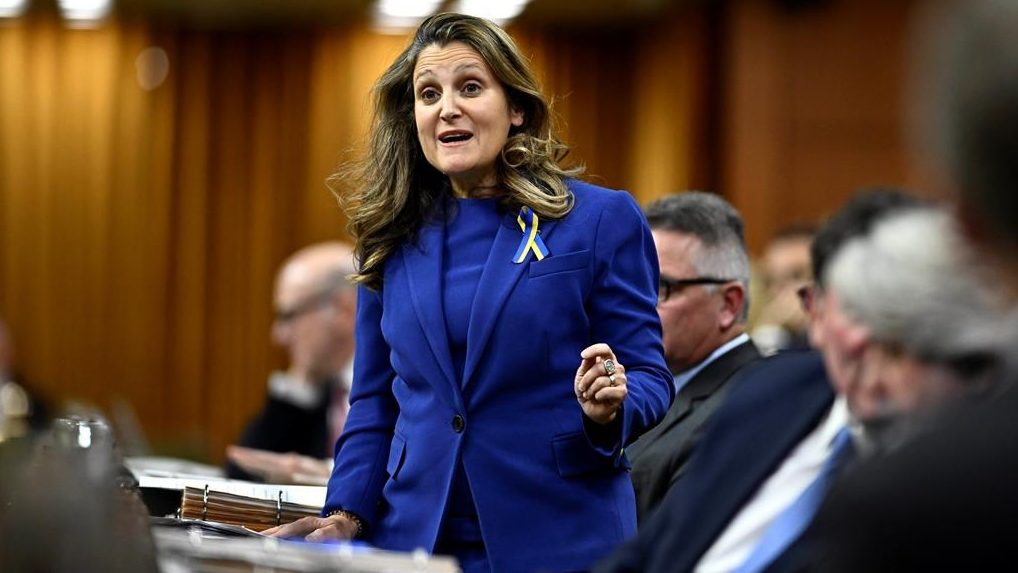Digital original series like ‘Blue’ and ‘Guidestones’ picking up steam
Posted July 30, 2014 3:17 pm.
This article is more than 5 years old.
TORONTO – Eight years after earning an Emmy Award nomination for directing on HBO’s “Big Love,” Rodrigo Garcia no longer thinks of networks as the primary goal for his scripted series.
“Blue,” for instance — starring Julia Stiles as a mother who secretly works as an upscale escort — is doing just fine online, with play on major digital distributors including YouTube, Hulu, CTV Extend at CTV.ca and on the CTV Go app.
Garcia, the show’s writer-director, says he would not take it to another platform “if it meant an enormous amount of oversight or a softening of the themes or something that would compromise the series creatively.”
“I want it to play wherever it can play and it plays well,” says Garcia. “I think this idea that the Internet is the minor leagues and the networks are the big leagues, these are ideas that are evolving so fast. You sound old-fashioned if you stick to your theories.
“It was only a couple of years ago that you’d say, ‘Oh, a series on Netflix — is someone really going to watch that?'”
Indeed, between the successes of “Blue,” “House of Cards,” “Hemlock Grove” and several other digital original series, it seems the genre is picking up steam. Not only do web series now have big stars as well as the International Digital Emmy Awards and the Streamy Awards, Netflix’s “House of Cards” and “Hemlock Grove” are now threats to cable networks, landing Primetime Emmy nominations.
“You’re starting to see bigger names, meaning stuff is being produced by larger organizations and broadcasters and that sort of thing, so it’s definitely growing,” says Jay Ferguson, creator of the Canadian digital series “Guidestones,” which won best digital fiction program at last year’s International Digital Emmy Awards. It also got a Canadian Screen Award for best original series produced for digital media.
“A few years ago it was just kind of like people weren’t so interested, it was a wild west,” adds Toronto-based Ferguson, whose series screens on CTV Extend and CTV Go.
“It’s still totally a wild west, but certainly the big names are starting to get into the game, so competition is definitely getting fierce in the last couple of years.”
Garcia — director of the 2011 drama “Albert Nobbs” and developer of the HBO drama “In Treatment” — entered the world of web television two years ago when he and acclaimed producer-director Jon Avnet launched WIGS as part of the YouTube Original Channel Initiative.
The project stemmed from a longing to make web content with “lasting quality” rather than the amusing, essentially disposable pieces that made up most online video platforms.
“We thought, why couldn’t we make, even with limited resources and even in shorter instalments, something that can have quality and that actors can respond to and that can eventually become part of a library?” he says.
At first the executives they pitched the idea to seemed puzzled by it.
“Then eventually the iPads came out and people started consuming content on their iPads and binging on a weekend,” says Garcia. “This whole idea that if it … was quality it had to be seen on a TV, sort of started to fade away.”
Garcia and Avnet focused mostly on making short, serialized bits that could be combined into longer episodes, which is what they’ve done with “Blue” as well as “Lauren,” starring Jennifer Beals.
Canadian actress Alexz Johnson, who plays a musician in season 3 of “Blue” that recently went online, liked that the series offered a new acting challenge and the chance to be a part of a burgeoning genre.
“I think it’s going to take a bit of time for it to really catch on, but I think it really is the future of TV,” she says. “No one in my life really has cable.”
Season 1 of “Guidestones,” about a journalism student (Supinder Wraich) investigating a global conspiracy, had episodes averaging about three minutes. For the recently released second season, the creators made the episodes 10 minutes long after noticing attention spans for online viewing are increasing.
Ferguson says they didn’t initially consider the series for TV, but they ended up designing season 2 episodes so they can be repurposed for broadcast if need be.
“Frankly, I didn’t really want to do that,” he says. “But … the realities of the marketplace are that while we are starting to find broadcasters like CTV and other broadcasters around the world who are interested in licensing this content to play it online, we’re still in a grey zone where there is licensing fees to be made for television and movies.”
And therein lies the biggest challenge of digital series: less financing.
Greg Rubidge — president of Toronto-based film and TV distribution company Syndicado, which focuses on digital distribution — says investors are reluctant to put a lot into web television because they’re not sure how much they’re going to make. By contrast, the traditional TV model offers a more secure investment with broadcast pre-sales and Canadian funding mechanisms.
“I think it’s all going to be very disruptive still for the foreseeable future, like at least the next five years,” he says. “Until the medium becomes predictable and we can either pre-sell things or be 80 per cent sure we can make our money back on something, then people are not going to invest in it.”
Ferguson admits he and his partners put a lot of “sweat equity” (a.k.a. working for free) into “Guidestones,” which is filmed around the world and has an online interactive component. He figures they’re “functioning at essentially 1/10th of the budget of traditional television.”
“While the industry is shifting in many ways and changing, it’s still hard to finance and monetize content that’s just only playing online,” says Ferguson, who worked in the feature film business in Canada for 20 years before launching “Guidestones.”
The problem is worse in Canada versus the U.S., because brands don’t get as heavily involved here and “we don’t really have public funding systems set up for this kind of digital content,” adds Ferguson.
“In terms of creating … dramatic series online, there’s very little people doing it. The Independent Production Fund, the IPF, they’re essentially the one fund that you can go to if you want to do a digital series.”
Then there’s the challenge of writing shorter episodes in a way that doesn’t compromise the story — not to mention the stigma still attached to web TV.
“All you’ve got to do is say ‘web series,’ and it’s like, ‘Oh my God, run for the hills,’ right?” Ferguson says with a laugh.
Johnson, who played the lead on the CTV series “Instant Star,” has experienced that.
“I don’t think people realize how cool it is yet,” she says. “I think people are like, ‘Oh, really? You’ve been the lead of this and this, you’re doing a digital series?'”
Still, Ferguson thinks that stigma is “slowly eroding,” and says he’s even starting to get phone calls from TV producers asking how to get financing for web series.
“It’s hard to get money in Canada for any kind of original content, let alone having to go out and get millions of dollars to get a TV show off the ground or hundreds of thousands or whatever it takes,” says Ferguson.
“So traditional producers are saying, ‘Well, there’s this place where we can create content and how do we do it?'”
Going digital also offers a unique creative freedom.
“As actors, we have so much freedom on set, because there’s no huge network watching every move that you make,” says Johnson, who is also a singer-songwriter and contributed three songs to “Blue.”
Notes Ferguson: “You hit the beats in the way you want to hit them. It’s extremely exciting to be able to do that.”
Rubidge says some programs originally made for broadcast also end up turning to digital platforms as a way of getting distributed outside their home territory. Examples he cites include “Rich Bride Poor Bride” and “Keys to the VIP.”
“Being on this platform, you reach other audiences that normally you wouldn’t reach,” says Garcia. “It’s another way to show your content, it’s here to stay. Any creator would be foolish to not at least do some of their work on it and see what audience is there for them.”
Still, Rubidge doesn’t foresee the demise of traditional TV models.
“It’s like TV never killed radio, the VCR never killed theatre,” he says.
“I would just say there are new players in the market and the term ‘broadcast’ is maybe up in quotes as the model shifts to on-demand.”










